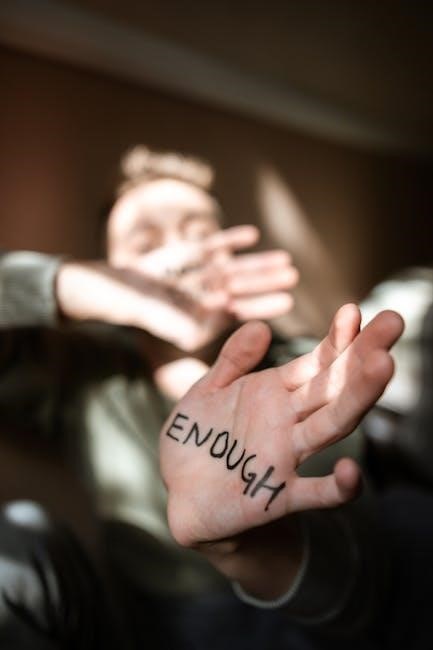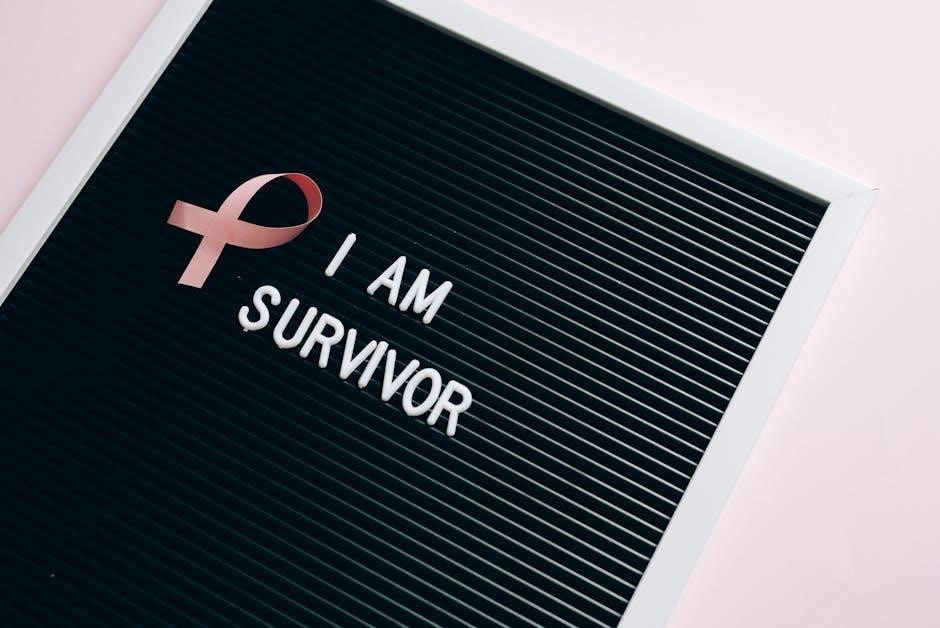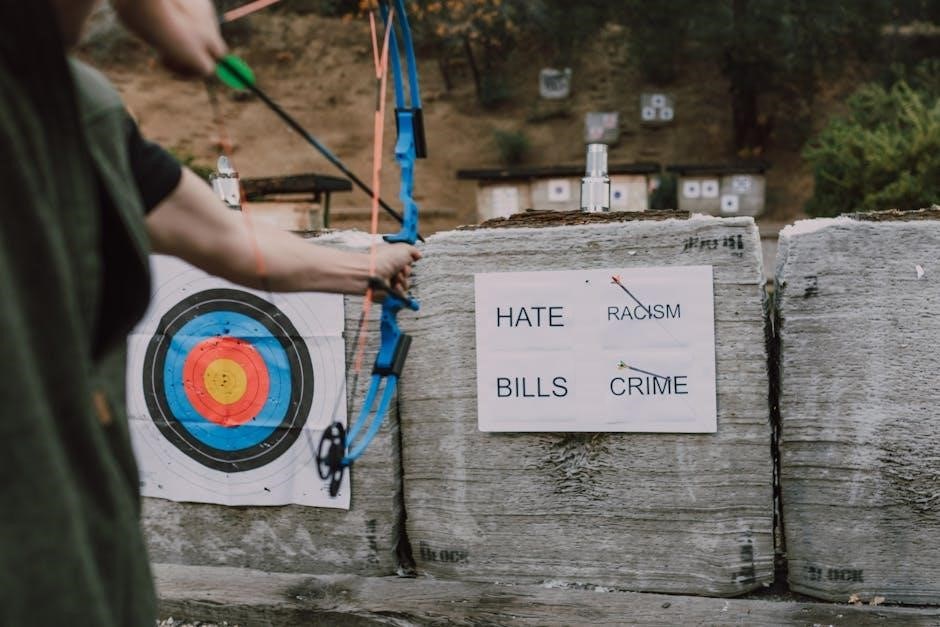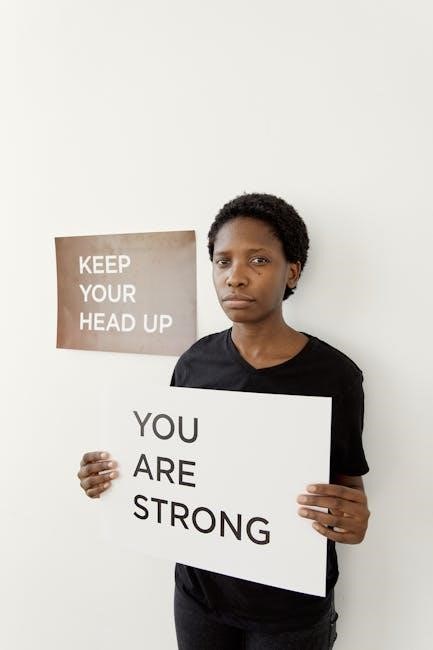Internalized homophobia refers to the absorption of societal homophobic attitudes, leading individuals to harbor self-loathing and shame, profoundly affecting their mental health and self-identity. This concept is crucial for understanding the emotional struggles within the LGBTQ+ community.
1.1 Understanding the Concept of Internalized Homophobia
Internalized homophobia occurs when individuals unconsciously adopt societal homophobic attitudes, leading to self-loathing and shame. This psychological phenomenon arises from exposure to heterosexist and discriminatory environments, causing LGBTQ+ individuals to internalize negative stereotypes. It manifests as self-hatred, low self-esteem, and fear of rejection, deeply impacting mental health and identity. Understanding this concept is essential for addressing its detrimental effects and fostering healing. Recognizing its roots in societal bias helps individuals begin the journey toward self-acceptance and overcoming internalized shame.
1.2 The Importance of Addressing Internalized Homophobia
Addressing internalized homophobia is crucial for mental health and emotional well-being. Left unchallenged, it can lead to chronic self-hatred, anxiety, and depression, hindering personal growth and relationships. By confronting these deeply ingrained biases, individuals can reclaim their self-worth and embrace their authentic identity. This process not only fosters resilience but also promotes a healthier, more compassionate mindset. Recognizing the societal roots of internalized homophobia empowers individuals to challenge harmful narratives and seek supportive environments. Overcoming this internalized shame is a vital step toward healing and living a fulfilling life.

Causes of Internalized Homophobia
Internalized homophobia stems from societal norms, heterosexism, and personal traumatic experiences. It often develops through exposure to homophobic environments, leading to self-rejection and internalized shame.
2.1 Sociocultural Factors
Sociocultural factors, such as societal norms, media representation, and institutional policies, play a significant role in shaping internalized homophobia. Growing up in a heteronormative environment often exposes individuals to homophobic messaging, reinforcing feelings of shame and inadequacy. Lack of positive representation and constant exposure to discriminatory attitudes can lead to self-rejection. Cultural and religious teachings often perpetuate negative views of homosexuality, further internalizing these beliefs. These factors create a toxic environment where individuals struggle to reconcile their identity with societal expectations, deeply impacting their mental health and self-perception.
2.2 Personal Experiences and Trauma
Personal experiences, such as bullying, rejection, or traumatic events, significantly contribute to internalized homophobia. Individuals who face discrimination or abuse based on their sexual orientation often internalize these negative experiences, leading to self-loathing and self-doubt. Traumatic encounters, particularly during formative years, can deeply embed homophobic beliefs, making it difficult to embrace one’s identity. These experiences often manifest as fear of rejection, self-hatred, and a struggle to form healthy relationships. The cumulative effect of such trauma can hinder personal growth and self-acceptance, perpetuating a cycle of internalized shame and emotional distress.

Emotional and Psychological Effects
Internalized homophobia often leads to depression, anxiety, and low self-esteem, as individuals struggle with self-acceptance and grapple with societal rejection, causing profound emotional and psychological distress;
3.1 The Impact on Mental Health
Internalized homophobia significantly affects mental health, often leading to depression, anxiety, and low self-esteem. Negative self-perception and emotional distress can result from internalizing societal homophobic views, creating a cycle of self-hatred. Studies show that individuals experiencing internalized homophobia may struggle with self-acceptance, leading to feelings of isolation and hopelessness. This can also contribute to substance abuse and self-destructive behaviors as coping mechanisms. The emotional toll often makes it difficult for individuals to seek help, further exacerbating mental health challenges. Addressing these issues is crucial for promoting healing and fostering a healthier mental state.
3.2 The Role of Shame and Self-Hatred
Internalized homophobia often manifests as deep-seated shame and self-hatred, stemming from the absorption of societal homophobic attitudes. This emotional burden can lead to self-rejection, low self-worth, and a distorted self-perception. Shame may cause individuals to hide their true identities, fostering feelings of alienation and isolation. Self-hatred, in turn, can perpetuate harmful behaviors and reinforce negative beliefs about oneself. These emotions create a cycle that exacerbates mental health struggles, making it challenging to embrace authenticity. Recognizing and addressing these feelings is essential for healing and developing a more compassionate relationship with oneself.

Identifying Signs of Internalized Homophobia
Recognizing signs of internalized homophobia involves acknowledging self-loathing, fear of rejection, and negative self-talk. These indicators often stem from societal prejudice and personal trauma.
4.1 Recognizing Self-Loathing and Negative Self-Talk
Self-loathing and negative self-talk are common manifestations of internalized homophobia, often rooted in societal prejudice and personal trauma. Individuals may express self-disgust, deny their sexuality, or criticize themselves harshly, perpetuating a cycle of shame. Recognizing these patterns is crucial for healing, as they can lead to low self-esteem, self-worth issues, and emotional distress. Acknowledging these signs is the first step toward addressing the deeper wounds caused by internalized homophobia, allowing individuals to begin their journey toward self-acceptance and mental well-being.
4.2 Understanding the Fear of Rejection and Being “Outed”
The fear of rejection and being “outed” is a pervasive symptom of internalized homophobia, rooted in societal homophobia and personal experiences of rejection or trauma. This fear often manifests as anxiety about being discovered or judged, leading to feelings of vulnerability and isolation. It stems from internalized beliefs that being LGBTQ+ is wrong, causing individuals to anticipate rejection and hide their true selves. This fear can prevent people from seeking support or expressing their identity openly, further perpetuating feelings of shame and self-doubt. Addressing this fear is essential for healing and self-acceptance.

Strategies for Overcoming Internalized Homophobia
Overcoming internalized homophobia involves self-awareness, education, and support. Recognize societal influences, seek therapy or support groups, and practice self-compassion. Embrace your identity with pride and patience.
5.1 The Power of Self-Compassion and Self-Awareness
Self-compassion and self-awareness are essential tools for addressing internalized homophobia. Practicing self-compassion involves treating yourself with kindness, acknowledging your humanity, and accepting your feelings without judgment. Self-awareness allows you to recognize and challenge harmful beliefs rooted in societal homophobia. By understanding how these beliefs were formed, you can begin to reframe them in a positive light. This process fosters emotional healing and empowers you to embrace your authentic identity. It’s important to approach this journey with patience, celebrating small steps toward self-acceptance and resilience.
5.2 Seeking Support Through Therapy and Support Groups
Therapy and support groups provide vital spaces for individuals to address internalized homophobia. Professional guidance helps uncover and challenge harmful beliefs, fostering a deeper understanding of self-worth. Support groups connect you with others facing similar struggles, creating a sense of community and reducing isolation. Sharing experiences and receiving validation can diminish shame and promote healing. These environments encourage open dialogue and provide practical tools for coping with internalized homophobia, helping you build resilience and embrace your authentic identity with confidence and self-acceptance.
5.3 Challenging Negative Beliefs and Thought Patterns
Challenging negative beliefs requires active self-reflection and intentional mindset shifts. Cognitive-behavioral techniques can help identify and reframe harmful thought patterns rooted in internalized homophobia. Educating oneself about LGBTQ+ history and rights fosters a more affirming self-view. Questioning societal norms and embracing diverse perspectives can dismantle ingrained biases. Affirmative self-talk and mindfulness practices also play a crucial role in replacing self-criticism with compassion. By consistently addressing and rejecting harmful beliefs, individuals can gradually cultivate a more positive and accepting relationship with themselves, paving the way for lasting emotional healing and self-acceptance.

Building a Supportive Community
Building a supportive community involves surrounding yourself with positive influences, fostering safe spaces for open dialogue, and advocating for LGBTQ+ rights and visibility to promote acceptance and healing.
6.1 Surrounding Yourself with Positive Influences
Surrounding yourself with positive influences is crucial for overcoming internalized homophobia. Seek out supportive friends, family, or mentors who embrace your authentic identity and promote self-acceptance. Engaging with LGBTQ+ affirming communities can provide a sense of belonging and reduce feelings of isolation. Positive role models, whether in person or through media, can inspire self-love and resilience. By immersing yourself in nurturing environments, you can gradually dismantle harmful beliefs and replace them with affirming messages, fostering personal growth and emotional well-being.
6.2 Advocating for LGBTQ+ Rights and Visibility
Advocating for LGBTQ+ rights and visibility is a powerful way to combat internalized homophobia and foster a more inclusive society. By supporting LGBTQ+ organizations and participating in awareness campaigns, you contribute to systemic change and promote acceptance. Visibility helps challenge harmful stereotypes and reduces stigma, encouraging individuals to embrace their identities. Advocacy also empowers personal healing, as fighting for your rights can dismantle internalized shame and replace it with pride. Collective action strengthens resilience and fosters a culture of acceptance, benefiting both individuals and the broader community.

Embracing Authenticity and Self-Acceptance
Embracing authenticity and self-acceptance is a transformative journey, allowing individuals to shed internalized homophobia and reclaim their true selves. Self-acceptance fosters healing, empowerment, and mental well-being.
7.1 The Journey of Self-Discovery and Healing

The journey of self-discovery and healing from internalized homophobia involves recognizing and challenging deeply ingrained negative beliefs. It requires patience, self-compassion, and a willingness to confront painful experiences. Through introspection and exploration, individuals can uncover the roots of their shame and gradually replace self-hatred with self-acceptance. This process often involves reconnecting with one’s true identity, embracing authenticity, and fostering a positive sense of self. Healing is not linear, but with persistence and support, individuals can move toward a life free from the burdens of internalized homophobia, embracing their true selves with dignity and pride.

7.2 Celebrating Your True Identity
Celebrating your true identity is a powerful step in overcoming internalized homophobia. It involves embracing your authentic self, free from societal expectations and shame. By acknowledging and valuing your unique experiences, you reclaim your dignity and foster self-love. This celebration can manifest through pride in your sexuality, engaging with supportive communities, and aligning your actions with your true self. Embracing your identity not only promotes personal growth but also inspires others to do the same, creating a ripple effect of acceptance and empowerment. It’s a testament to resilience and the beauty of living authentically.